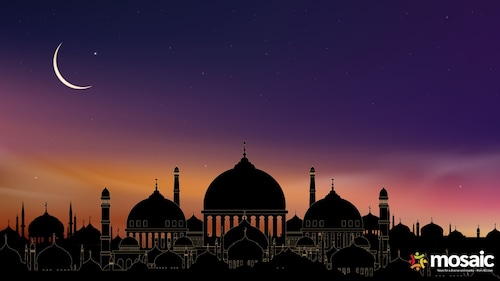
The holy month of Ramadan has begun.CANVA
Over 300,000 Muslims across New Jersey began observing the holy month of Ramadan on Friday.
For about a month, Muslims pray, reflect, perform community service, donate to charity, and fast, refraining from eating or drinking from sunrise to sunset.
“Ramadan is very important to us as Muslims not just in New Jersey but throughout the entire world,” said Aya Elamroussi, a spokesperson for the Council on American-Islamic Relations New Jersey (CAIR-NJ). “We focus on reigniting and connecting with our lord during those 30 days.”
“It’s the most communal time of the year,” she added. “And people just want to gather and give.”
Here’s what to know about Ramadan, according to CAIR-NJ.
Q: When does Ramadan start and end?
A: Muslims follow the lunar calendar based on the cycles of the moon. So, the exact start and end dates for the month-long holiday can vary. Ramadan began on the evening of Feb. 28 and will end on March 30 or 31.
Q: Why do Muslims fast during Ramadan?
A: Fasting is one of the five key pillars of the religion and is a time to develop self-discipline and spiritual growth.
Q: What does a typical day look like for a Muslim during Ramadan?
A: Muslims who fast wake up before sunrise to eat suhoor, the meal that will fuel them while they fast. Throughout the day, they won’t eat or drink anything – even water. Then, at sunset, they break their fast at iftar, a meal that marks the end of the fast for the day and is typically eaten with friends and family. They also focus more intently on daily prayers, adding others performed during Ramadan. Muslims will also donate money and volunteer throughout the month, a practice known as Zakat and Sadaqah.
Q: How do you respect someone who is fasting if you are not?
A: Acknowledging the faith by saying “Eid Mubarak” or “Ramadan Mubarak” can go a long way. Additionally, if eating in front of Muslims, be mindful that they may not have eaten or drank for hours.
Q: Why are there crescent moon and lantern symbols in decorations for Ramadan?
A: The crescent moon symbols represent what the moon looks like at the start of Ramadan, and lanterns symbolize the light of knowledge and the illumination of the soul. Many households have these decorations.
Q: What is Eid ul-Fitr, and how is it related to Ramadan?
A: Eid ul-Fitr marks the end of fasting and means “festival of breaking the fast.” During Eid ul-Fitr, Muslims celebrate by donating to charity, participating in family and friend gatherings, giving gifts, engaging with the community, and participating in a special large congregational prayer, typically held at mosques, convention centers, or parks.
Stories by Amira Sweilem
Amira Sweilem may be reached at asweilem@njadvancemedia.com.
Welcome to Mosaic. Follow us on Instagram at @MosaicNJcom and on Facebook at MosaicNJcom and on YouTube at @MosaicNJcom.
